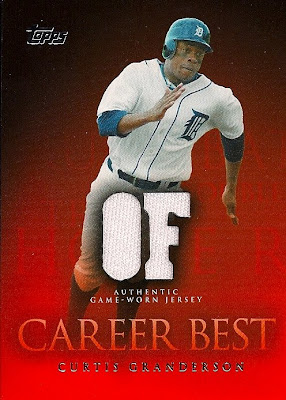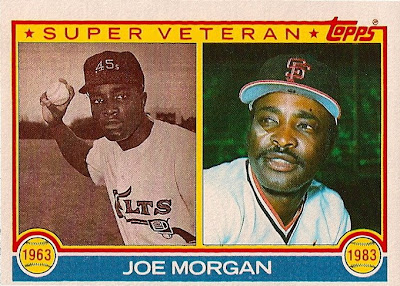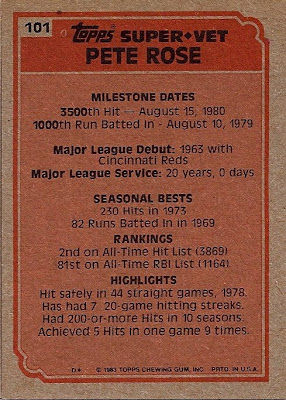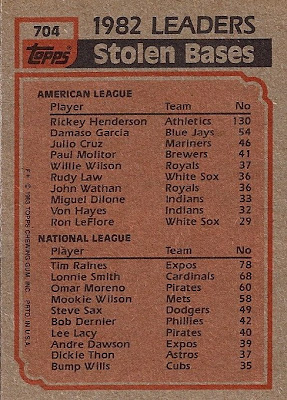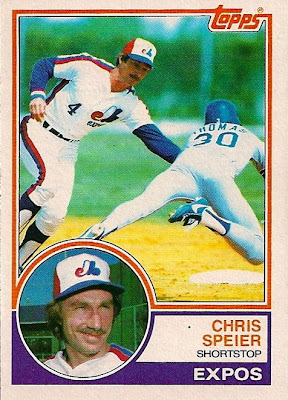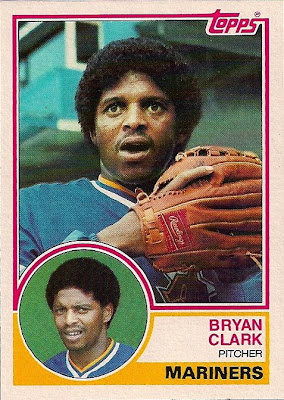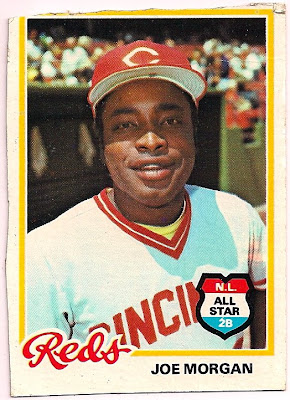The journey to get back in collecting has been fun and nostalgic as I open box after box of cards that haven't seen the light of day in 15-20 years. It is taking longer than expected now that I've gotten sidetracked by the 2009 Topps cards that were released last month. After buying a "hobby box" and various other loose packs, I've finally completed the 2009 Series One and additionally have small piles of insert cards, "game-used" cards, parallel cards, and miscellaneous duplicates to look at, some better than others. But I have a nagging suspicion that I have been going about collecting the "new" stuff the wrong way.
I don't have buyer's remorse, but all of this action in the past month has led me to a realization. It is far, far cheaper just to go to eBay and buy a set of cards than trying to collect a set by buying packs. This may seem obvious to most of you, but the difference between the two methods is astonishing. I may have spent $120-$140 in small increments over the past 6 weeks just to complete half (or a third) of the 2009 Topps set, whereas that same set of cards, minus the duplicates and inserts can be had for less than $20 on eBay, shipping included. And I am fairly certain that by the year end I would be able to buy the entire set of Series 1 and 2 even cheaper.
So what do you miss by taking the quick and dirty route to set-building? Well, you certainly miss the thrill of opening a pack of cards, and especially the excitement that your pack might contain (it doesn't) some amazing insert card that MIGHT be valuable or at least entertaining to look at. At least, in theory, that seems like a lot to give up, since that was originally the fun of baseball card collecting. In reality it is completely insane to attempt to complete any insert set simply by buying packs. I have even spent the last few weeks attempting to trade for the last of the 2009 Turkey Red Set (rather, HALF of the Turkey Red Set), which has been interesting, but I am still missing 9 cards, or almost 20%. I am even further from completing any of the other insert sets. It used to feel like cheating to buy a complete set at a card show or on eBay. I was missing out on half the fun of card collecting, right?
My experience this month has erased that vague feeling of guilt. A quick perusal of eBay again reveals that these elusive inserts can be bought quickly and in total for less than I have spent so far. What is so insane about not wanting to spend $300+ dollars for a set of baseball cards every year? The joy of collecting for me is to look at the cards, not to tally their total net value in some fanciful Beckett-induced fantasy. Trading is fun, collecting is fun, but SPENDING a lot of money is not always necessary for fun. For the same $300 I could buy the entire 2009 set plus an entire set of cards from the 1970's for instance. Stretching the collecting dollar is totally within the spirit of the hobby in my opinion. I think from now on I am going to be more judicious about where I spend the baseball card dollar. The farther I can stretch it, the better, no?
I'm not going to state that Topps has made card collecting too complicated. If the demand is there, than by all means, I hope Topps can supply it and be profitable and the more the better. If the general public wants a bunch of inserts and chase cards to track down and Topps can sell more cards by providing it, then let me step out of the way and let it roll.
BUT,
There is one area of collecting that I will step up and call madness. I only have had to look at three of these atrocities to know a stupid idea when I see it. Below are three "game-used artifact" cards, or "relics" as they are distastefully called. Would I like a game-used jersey in my collection? Perhaps yes, if it was George Brett's #5 that he wore during one of his campaigns. Probably no if it was a player I had no strong connection with at all. Would I want a tiny piece of George Brett's jersey crammed into a poorly made card with his picture slapped on it? Not at all. Is there really any meaning to be found in a 1" square piece of fabric that looks like every other 1" piece of fabric I've ever seen? How about a bat? Again, not a bad souvenir IF I could actually hold the bat and imagine it being used to strike the decisive blow in a big game at the hands of one my heroes. How about a small sliver of wood that may or may not have at one time been a bat, but looks identical to a sliver of wood that at one time might have been the end of a doorstop in some derelict office complex or housing project? Umm, no thanks.
There may be some perceived value in these cards currently, but there will someday be a glut of relic cards so vast and so worthless that it will make the overproduction issues of the 1980's and 1990's seem trivial. At least today, twenty years later, there is still some demand for the cards of that era. Collectors share a common connection with these cards because they are so familiar and easy to obtain. The blogosphere has come alive the past year or two with rhapsodic musings about baseball players and teams of that bygone era simply because there are so many other collectors out there that can appreciate it. They also have had the same thoughts and revels about the same cards and players I had many years ago and can relate to it well. After reading an exceptional post on a blog I actually experience a desire to go look at that card the writer was referencing.
How can there be any common connection with a card that is "1/1", or "34/51" or other nonsense? In the future is there going to a blogpost about some rare relic card of a journeyman shortstop that will mean anything if no one else has actually seen or held that card before? If my experience with cards is at all common, than the answer will be "NO".
I can fully imagine an eBay auction in 20 years for "800 GU Jersey/Bat Cards - NICE! with a Buy It Now option of $9.99 FREE SHIPPING!" that will end without a sale.
This isn't even addressing the depressing thought that actual pieces of history are being destroyed by band saw and fabric shear. Isn't there any better use for a pile of authentic game-worn jerseys and game-used bats than putting them in a proverbial paper-shredder? How about the novel idea of selling the ACTUAL jersey and/or bat? How about random redemption cards that could used to obtain the actual item? Who came up with the crazy idea that the best use of a Major League Baseball player's game bat is the take it the wood shop and hack it into tiny pieces?
I think this latest process takes the collector beyond simple fandom and into a semi-religious realm of literal hero-worship. The cards are even called "relics" just like the tiny slivers of bone and hair from the saints contained in the reliquaries of every Medieval cathedral . This level of collecting makes me think more of "creepy" than "cool". Am I alone here?
I will be giving away all three cards here, starting with the one and only contributor to my post on the Rickey Henderson card. So, if MMayes of the "1972 Topps Baseball" blog cares to email me, the card of his choice is his. Email me a toppsbaseball at gmail.com. If none of those cards interests you, email me anyway and we can work out another prize. Thanks!
One last comment before I go. As I actually look at these cards I am amazed at the craftmanship, or lack thereof, in these cards. Some have loose threads, all have irregular cut mattes surrounding the patch which seems to indicate that it was cut by hand with an exacto knife instead of an automated press. Amazing!


